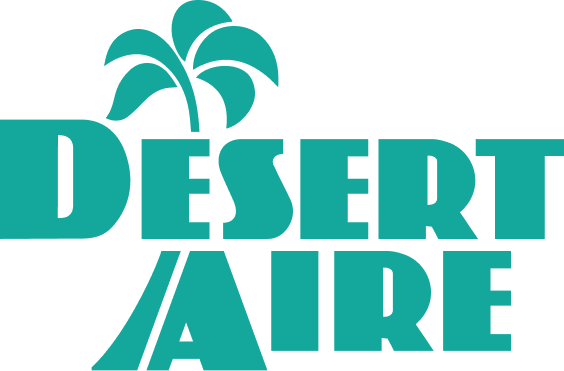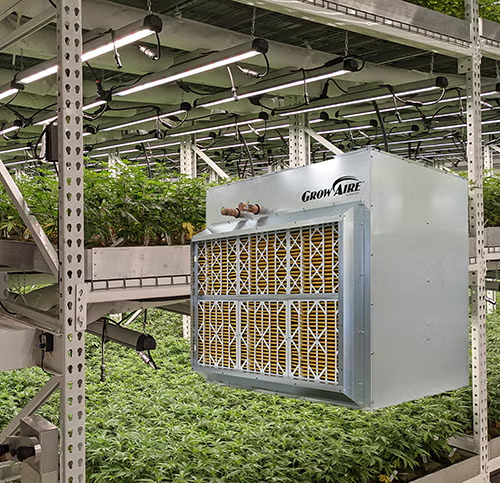
Impact of Design Conditions on Grow Facility Equipment Performance | AN33
An indoor cannabis grow operation is, in essence, a manufacturing process that has many variables that must be controlled to maximize the yield of product at the lowest operational cost. In addition to yield, the design parameters must also prevent mold and mildew from impacting product quality.
Gated Content Overview Headline
Lorem ipsum dolor sit amet, consectetur adipiscing elit, sed do eiusmod tempor incididunt ut labore et dolore magna aliqua.
Ut enim ad minim veniam, quis nostrud exercitation ullamco laboris nisi ut aliquip ex ea commodo consequat. Duis aute irure dolor in reprehenderit in voluptate velit esse cillum dolore eu fugiat nulla pariatur. Excepteur sint occaecat cupidatat non proident, sunt in culpa qui officia deserunt mollit anim id est laborum.
Gated Content
Please fill out the form for access.
Overview
An indoor cannabis grow operation is, in essence, a manufacturing process that has many variables that must be controlled to maximize the yield of product at the lowest operational cost. In addition to yield, the design parameters must also prevent mold and mildew from impacting product quality. This application note highlights some of those variables as they pertain to the grower’s selection of the growing environment’s design conditions (temperature and humidity) and the impacts on both plants’ growth and facility energy efficiency. (Learn more in our blog An Insider’s View of 8 Indoor Grow Room Design Factors)
The design decisions should take into account how the selection of temperature and humidity conditions during all stages of plant growth impact the performance of the HVACD (Heating, Ventilation, Air Conditioning and Dehumidification) system. The grower or owner may not fully understand how the cooling and dehumidification system functions, however, it is important that they appreciate and carefully consider how the choice of temperature and humidity targets impact capital and operational costs.
LIGHTING
The relative merits of the various lighting technologies are beyond the scope of this Application Note. The focus will be on the impact that the type of lighting selected has on the target temperatures and the HVACD system sizing and energy performance. For a more comprehensive overview on the use of different light types, Desert Aire recommends reading the LED Lighting Best Practice Guide published by the Resource Innovation Institute (resourceinnovation.org).
From an HVACD perspective, the types of lighting can be grouped into two categories, those that emit significant infrared light and those that do not emit this part of the light spectrum. Since LED and fluorescent lamps do not emit as much infrared light they do not transfer heat to the plants via radiation. In contrast, HID lamps emit a relatively large amount of radiant heat, even at the same energy input. This, coupled with the fact that LED lights are often specified with lower energy input for any given canopy area means that the infrared radiation when using LED lamps is far lower than when using HID technologies.
The output from an HID light is approximately 55% radiant heat (energy in the form of electromagnetic radiation or infrared wavelengths), 10% convection heat (energy transferred to the air) and 35% in light energy. LED lights have less than 25% radiant heat, 25% convection heat and the remaining 50% in light energy. This, coupled with the fact that the gross power input for LED installations is specified at a lower value means that the net total infrared energy sent to the plants is much lower in rooms equipped with LED lights than in rooms with HID lights.
It is crucial to know how such differences influence the growing environment. The HID lights produce significantly more infrared radiation that does not directly impact photosynthesis or other chemical plant processes but does affect the plant transpiration. The infrared light only serves to heat the leaves and other objects in the room, requiring cooler room temperatures to keep the plants’ leaves at their ideal temperature.
LEAF SURFACE TEMPERATURE
Most biochemical reactions operate efficiently only within a certain temperature range. If temperatures are too low or too high, the reactions proceed more slowly or not at all. Most of any plant’s metabolism occurs within the leaf. For any given plant, there is an optimal leaf surface temperature range that maximizes growth and production of other desirable secondary substances.

There are many factors that impact the ideal leaf surface temperature for plants. It is affected by ambient temperature around the plant, the type of plant as well as the color of the pigments in the leaves. The optimal leaf temperature range for photosynthesis in most plants is between 60°F and 85°F (15°C and 30°C) for normal atmospheric concentrations of carbon dioxide (CO2). Although there are differences in plant species and cultivars, generally, the higher end of this range optimizes growth in foliage, fruit, and flower production.
Plant cell membranes are made up of fats that respond to the temperature of the leaf. At too low of a temperature the fats can turn solid which can crack the membrane and cause a leak. At high temperatures, the membrane can turn to fluid and also leak through its pores. Plants need several days to adjust to wide swings in temperature as they have limited resources to change the membrane structure. Temperature and temperature consistency are important.
The impact of infrared radiation on plant cellulose and fibers is impacted by the emissivity of the plant surface. The infrared radiation may not be effectively conducted through the plant material, however, the water molecules in plants strongly absorb the electromechanical radiation. The water molecules are excited by the radiation and transfer the heat to the cellulose and fibers.
The photorespiration process is dependent on leaf temperature and not on room temperature. The effect of this infrared energy is to increase the Vapor Pressure Deficit (VPD) experienced by the plant leaves. The VPD is the difference between the elevated leaf temperature and how much moisture the air can hold when it is saturated. This increase in the VPD results in an increase in the plant’s evapotranspiration rate.
Because many plants rely on their leaves for survival, it makes sense that leaves have their own temperature regulation system to assist in compensating for changes in environmental conditions. Evaporation of the water released through stomata cools the plant through a process called transpiration. Up to 90% of water absorbed by the plant is used for transpiration, while 10% is used for growth. In HID light applications, growers need to move the lights further away from the plant canopy to help prevent the lights from internally injuring the plant due to too high of a temperature. The cooler room temperatures are also required to assist the evapotranspiration process to cool the plant from the infrared heat.
Growers can measure leaf surface temperature with several methods such as probes and infrared measurement devices. However, many of these techniques provide a reading at a specific point, rather than the whole leaf. This can lead to some inaccuracies in measurement. Temperature can vary dramatically across the leaf, depending on the parts of the plant that are fully exposed to light or are in the shadow of the canopy.
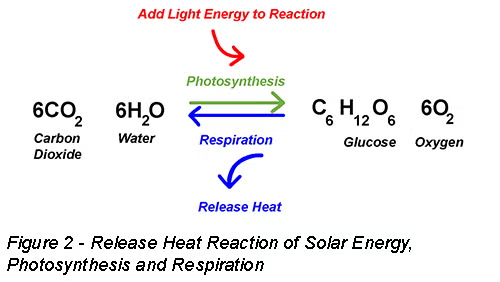
In addition to plants absorbing infrared energy, plants are internally generating heat through the process of cellular respiration which is discussed in the next section. During daylight or the lights-on period, the temperature of the plant leaf will always be warmer than the surrounding temperature in the room. The leaf temperature can be 1 to 13°F warmer than ambient temperature depending on the light source.
Figure 1 illustrates the large differences in the effect of the radiant heat on the leaf surface temperature. This shows the leaf surface temperature with different lighting technologies at different room temperatures with an infrared camera set to scale of 69°F to 95°F (21°C to 35°C). It can be seen that with the traditional high pressure sodium technology pictures on the right, the typical 75°F (24°C) room target temperature results in a leaf temperature that is approximately 88.7°F (31.5°C) that is optimal for photosynthesis. The LED technology shown on the left requires a 87.4°F (30.8°C) ambient room temperature to achieve the same leaf surface temperature due to the lower rate of radiant heat.
LEAF SURFACE TEMPERATURE AND PLANT GROWTH
Photosynthesis and cellular respiration are two basic metabolic processes occurring in the energy conversion and growth of plants. During photosynthesis, carbon dioxide and water are used to create glucose (sugar), the energy the plant needs, with the aid of light photons. This glucose is used by the plant cells as food. During cellular respiration, the stored energy in the form of glucose is released and breaks down into water, carbon dioxide and plant energy within the molecules of the plant. In this process, food generated by photosynthesis is used during cellular respiration to create plant growth.
The process of photosynthesis and cellular respiration utilize the same common elements. Photosynthesis is an anabolic (constructive) process, where the creation of glucose occurs and that energy is stored. Cellular respiration is a catabolic (destructive) process, where the stored glucose is consumed and provides the plant the energy it needs for growth.
The photosynthesis process only occurs in the green leaves which have chlorophyll and only when light is present. In this constructive process carbon dioxide is absorbed by the leaf via the stomata with the carbon used to form glucose while the oxygen is released into the room.
As the temperature rises in the plant, pressure builds up and forces the cell walls to stretch and grow. If the leaf temperature is too high, however, the plant will focus energy on cooling itself by opening its stomata, increasing transpiration rates and leading to a pressure drop that reduces the amount of expansion and leaf surface area. The increased surface area of the plant increases the absorption of photon energy. Leaf temperature also impacts leaf expansion, which is critical for ensuring light capture.
In the respiration process, plants oxidize glucose and release energy (heat) in an exothermal process. This raises the leaf temperature over the ambient temperature. Respiration occurs 24 hours a day during both photoperiod and dark period. Respiration occurs in all plant elements: leaf, stem and roots. During the photoperiod when the lights are on, plants transpire the water from the leaves helping to cool the plant’s internally generated heat. In the dark period, the transpiration decreases within an hour or two until it stops as the stomata close.
During the dark period, it is very important that the temperature is cooler than during the day because plants can experience stress if the temperature is extremely high. Most cultivators find a dark period temperature of 65°F (18°C) to 70°F (21°C) to assist in the process of the plant’s release of heat during respiration.
VAPOR PRESSURE DEFICIT (VPD)
Unlike relative humidity, VPD has a simple, nearly straight-line relationship with the evapotranspiration rate of a plant. The larger the VPD, up to a limit, the greater the evapotranspiration rate. This is important because plant growth requires nutrients, along with water, to be brought from the roots and into the leaves. The moisture is released through the leaves’ stomata. If the surrounding air is at 100% relative humidity, the transported water forms a film on the plants. If this moisture does not evaporate, plant growth cannot continue and the plant is susceptible to diseases, molds, and mildew. The VPD represents the amount of moisture that can be released from the plant through evaporation. The drier the air, the more water can be evaporated.
For any given air temperature, a lower humidity level will result in greater VPD. When the VPD rises, there will be more pressure on the plant to transpire and keep up with the higher rate of evaporation from the stomata. When the air is humid and the VPD is low, there will be less pressure on the plant to transpire. For most crops, an ambient VPD of 0.7 to 1.4 kPa is a good target to grow healthy and productive plants under HID lighting and sunlight. For a detailed discussion and calculation formulas, refer to Desert Aire Application Note #28 Vapor Pressure Deficit and HVAC System Design.
The most important variable that a grower can control is the VPD calculation defined by the zone design conditions of temperature and relative humidity. The other element is the leaf temperature which is not a variable that the grower can directly control. It is determined by the type of lights and their placement relative to the plant canopy. Many growers measure their plants temperature manually to develop an offset in plant leaf temperature vs. room temperature. They then apply this difference to their VPD calculations.

As described in the lighting section, the true driver of transpiration is the difference between the vapor pressure in the leaf and the air surrounding the leaf. Most traditional studies have measured the VPD of the air alone when recording the VPD for reporting. These studies were typically done with lighting sources that could be considered high radiant sources such as HID and sunlight. Leaf temperatures were inevitably warmer than the surrounding air during these studies.
The result was an actual leaf VPD that was higher than the measured ambient VPD. This was not extremely important as the technologies were all very similar and resulted in leaf temperature that was fairly consistently above the air temperature. Expressing the optimal VPD in terms of the air temperature and humidity only was reasonable as the results were predictable.
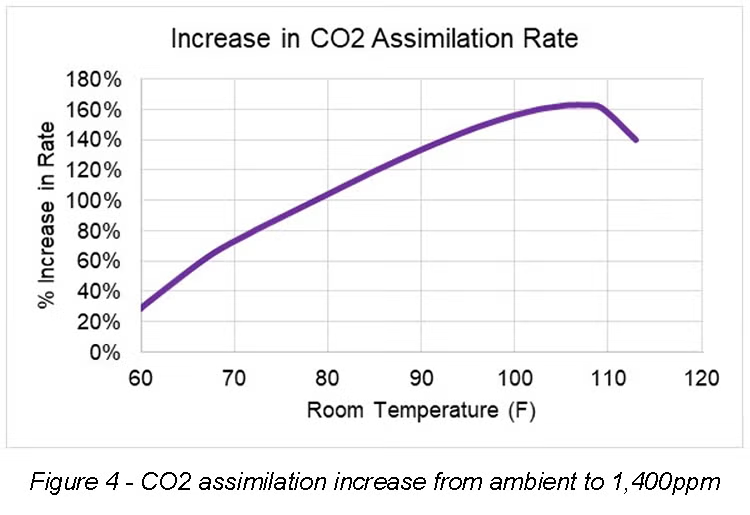
With new technologies coming to market that have a lower radiant heat output and result in lower leaf temperatures, care must be exercised in selecting the target VPD. The new lights must have an increased air temperature to achieve the same effective VPD and similar transpiration rates.
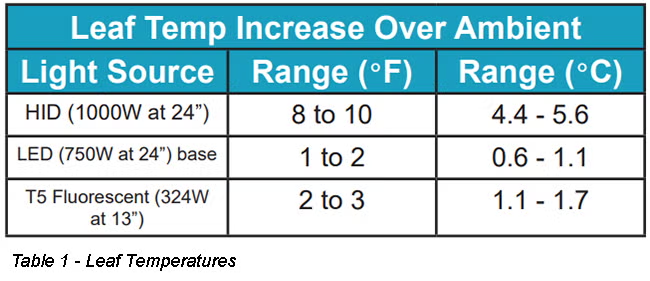
See Table 1 for the differences in light sources and the effect on the leaf temperature. If the HID was considered the base case for target VPD and LED lights are utilized, the difference must be made up in ambient temperature.
CARBON DIOXIDE
Plants obtain CO2 from the atmosphere via the plant’s stomata. Photosynthesis begins as the plant uses CO2 in combination with light to produce both glucose and oxygen. Increasing CO2 levels in your facility will allow your plants to create more energy. The amount of CO2 that a plant can utilize is dependent on the leaf temperature, so the grower needs to balance both leaf temperature and CO2 concentration to maximize the conversion of CO2 into sugar. With increased CO2 and temperature, the rate of the chemical reaction that produces sugar in the plant will also increase. This works because an increase in CO2 concentration means that there is more CO2 available for the process to create sugar. If the CO2 concentrations are increased from an ambient of 400ppm to 1400ppm, the change in the ratio of reactants to products will allow plants to continue to convert CO2 into sucrose at leaf temperatures above 81°F (27°C).
There is a maximum combination of temperature and CO2 concentration where the conversion rate is optimized. As temperatures continue to increase, some of the enzymes switch from photosynthesis to respiration. The portion that switches then limits the amount of CO2 that can be converted to sugar. This happens at 86°F (30°C) for 300ppm CO2 and 96°F (36°C) for 1400ppm. As the temperature increases, so does the rate of carbon consumption and plant growth. This means that if growers are careful with their environmental controls, they may achieve very high rates of plant growth at leaf temperatures well above 82°F (28°C) (See Figure 4). It is important not to confuse room temperature with leaf temperature. The leaf temperature may be 82°F (28°C) but the room could be 72°F to 78°F (22°C to 26°C).
Compare a 70°F (21°C) room to an 80°F (27°C) room. In a warmer room, a plant can consume 52% more CO2 conversion rate differential (20.5 vs. 13.5 µmol/m2/sec). Warmer room design conditions will improve the assimilation rate of carbon dioxide by the plant (400ppm vs. 1400ppm).
This assimilation rate is independent of the recommended increases in temperature to achieve the target effective VPD. Therefore, growers should consider targeting the upper range of the recommended leaf temperatures when CO2 supplementation is utilized to optimize the CO2 assimilation, even when the warmer temperatures are already targeted with LED lighting.
AIR MOVEMENT
Airflow and air movement are extremely important for facilitating water vapor transpiration by the plants. Air movement helps to deliver carbon dioxide to the leaves while transporting away water vapor produced by evapotranspiration. In this capacity, air movement enhances photosynthesis and nutrient delivery within the plant. Because air movement transports moisture away from the plant, it also helps to prevent growth of certain pathogens, such as molds and bacteria. Movement within the canopy assists in eliminating the potential for microclimates. As the plant grows, the leaves can interlock to prevent moisture from being transferred to the air around the canopy. Getting the leaves to gently “dance” prevents the blocking of air by interlocking leaves. The air movement should come from two sources: the integrated dehumidifier and the circulation fans on the walls and/or ceiling or the rack of the grow room. The circulation fans should be designed to move the air into the canopy, not above. In a properly designed grow room, the plants should be moving slightly with a target airspeed range of 60-100fpm (0.3-0.5 m/s). The air turnover in a grow room should be higher than 15 air changes per hour when the HVACD and the circulation fans are added together. However, it is equally important to aim the circulation fans at the plant canopy to eliminate microclimates.
HVACD PERFORMANCE
The grower can choose many different combinations of indoor zone temperatures and relative humidity in which to grow. Each design point has a direct impact on the VPD which results in different plant growth and yield. And the same VPD can be achieved at different temperatures, for example, 82°F (28°C) and 65% relative humidity is the same VPD as 74°F (23°C) and 54.4% relative humidity. The design point must be coordinated with the type of light and level of CO2 in the grow room.

This application note is using the actual vapor pressure deficit values incorporating the type of lights being used instead of just assuming the leaf temperature equals the ambient temperature. Therefore, the VPD values are higher in value than has been traditionally reported.
It should be noted that in the examples that follow the VPD value is using a leaf temperature that is 8 degrees warmer than the air, such as what is found in HID lighting. This would be the equivalent of air temperature basis (ambient) VPD of 0.8 to 1.4kPa VPD. Refer to Desert Aire Application Note #28 Vapor Pressure Deficit and HVAC System Design for a more detailed discussion on actual VPD vs. ambient VPD.
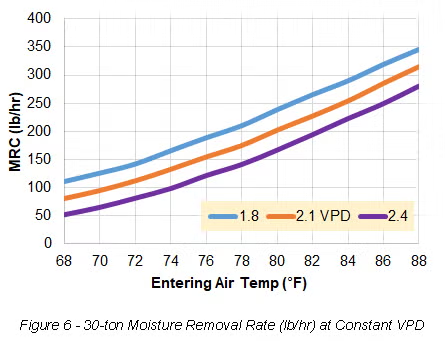
Another design consideration must also be added to the equation: How does the design condition impact the capacity and performance (cooling and dehumidification) of the HVACD equipment? Poor room temperature and humidity selections from a HVACD standpoint will require larger systems (higher capital expense) and higher operational cost (electrical energy). Both impact the operation profitability. The cooling portion of the HVACD equipment is not significantly impacted by changing the VPD, however, the dehumidification capacity of the system is significantly impacted (see Figure 5).
As the VPD is increased, either by increasing temperature or lowering the relative humidity, the zone condition moves further away from saturation, the point where the air cannot hold any more moisture. Most of the capacity of the HVACD equipment is used to cool the air to the saturation point where the system starts removing moisture from the air. But at that point, there is much less capacity remaining in the equipment to significantly dehumidify. This leads to larger equipment sizes required to meet the evapotranspiration rate. To change the design conditions from 78°F (24°C) to 72°F (22°C) at a 2.1kPa VPD, (see Figure 6) the unit would need to be 55% larger to meet the cooling load and the same dehumidification capacity (175 lb/hr vs. 112 lb/hr).
One of the concerns of the grower has been that air conditioners with fixed stand-alone dehumidifiers cannot control the zone’s conditions to a tight range. In these cases, the zone’s relative humidity spikes well above 80% and allows liquid water to form on the leaves, especially in the middle of the canopy. This provides an opportunity for mold to form. With an integrated HVACD system, proper control ranges can be achieved allowing the grower to keep the VPD at the lower range of the target and in tighter tolerances.
When higher VPD values are selected, they increase plant transpiration rates which require additional irrigation water to prevent wilting. Lower room temperature targets combined with low relative humidity (higher VPD) have a double impact on the HVACD size. First, the unit removes less water at these design conditions and the plant will increase the amount of moisture that needs to be removed.
Figure 7 is an example of how VPD can affect water utilization rates and HVACD capacities. The solid line represents the watering rate. As the vapor pressure increases, the plant increases its evapotranspiration rate. Since not all of the water is actually absorbed by the plant, the line represents the net watering rate after a portion of the water applied and not absorbed by the plants, is sent to the drain or recirculation tank. Some of the water is retained within the plant, but the majority is released to the room in the form of evapotranspiration.
For flowering cannabis plants, there is an estimated 30% increase in the total water transpired by the plants between a VPD of 1.6 and 3.0kPa. Not only does this affect the water requirements for irrigation, it also affects consumable costs for nutrients and waste treatment systems,
The HVACD capacity needed to meet the grow room dehumidification load at a VPD of 3.0kPa is about 20% greater than at 1.8 kPa, requiring both larger equipment and more energy to operate. In many cases, a VPD of 2.0kPa is well within the target range for optimal growth for most plants. At 84°F (29°C) air temperature, 2.0kPa is equivalent to 54% RH. This is still well away from the point of air saturation (100% RH), even if the air humidity in certain areas of the canopy is higher than the room measurement. This is especially true if the air distribution throughout the facility is not well controlled. Allowing the humidity to rise into this range, but still be well regulated by the HVACD system is good for the plants and reduces the energy used.
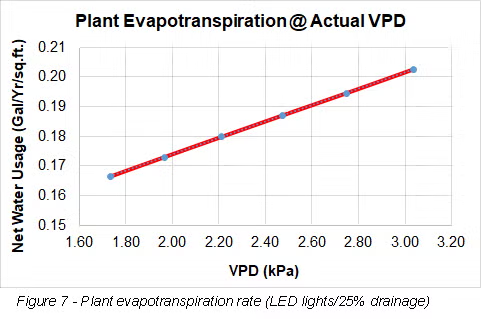
Understanding VPD and its impact on plant development, HVACD selection, and resource utilization is essential for the grower to optimize yields and costs. When the right VPD is targeted for the given crop, light source, and nutrient/water delivery methods, the right HVACD equipment can be installed to manage the room conditions, while minimizing capital and operating costs, and ultimately, maximizing plant growth and health.
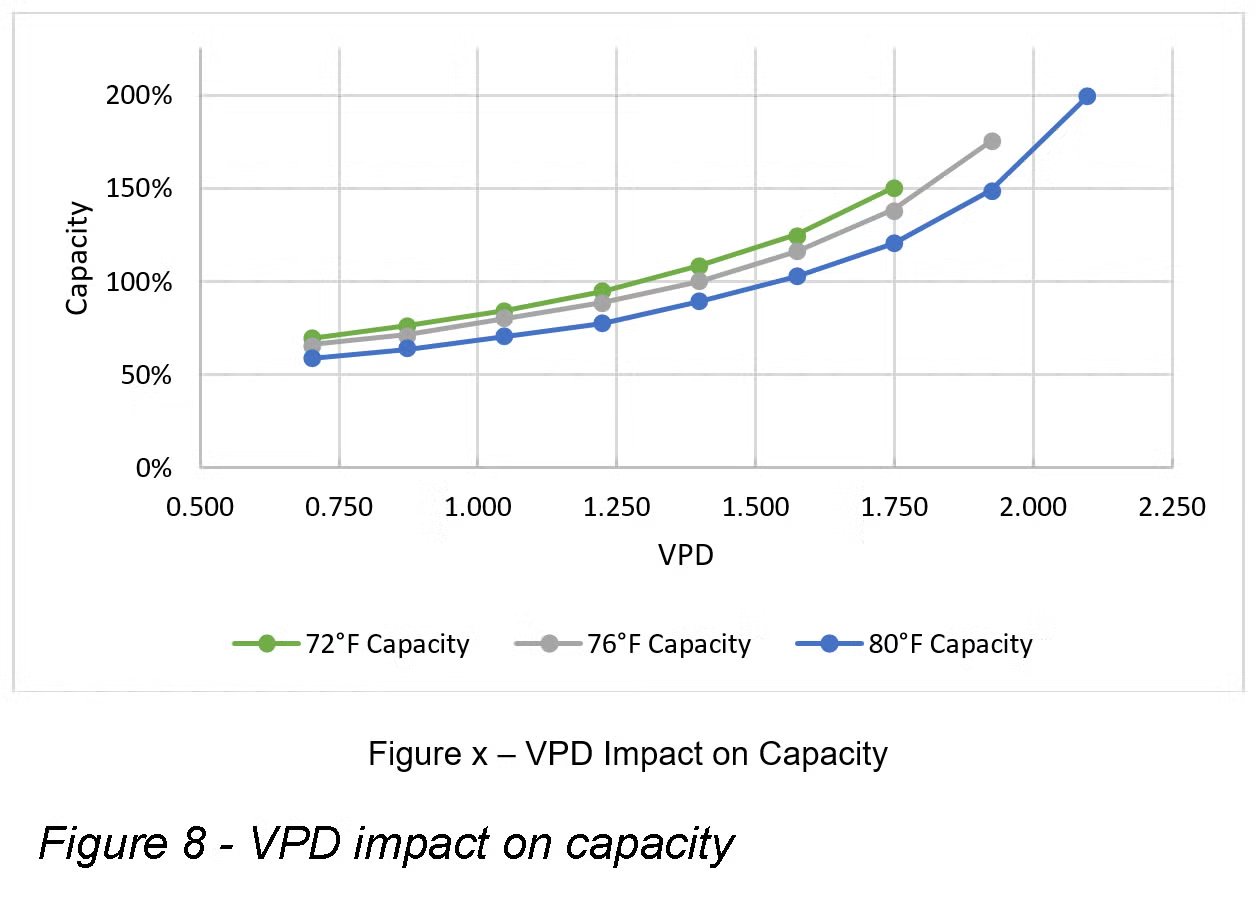
HID to LED Example
For a flower room that was targeting a 73°F/55% RH room, the ambient VPD calculation yields 1.25 kPa. With an HID light and an 8°F increase in leaf temperature, the actual VPD value is 2.09. This is the real driving force on the evapotranspiration of the plant.
To change this to an LED light source that only has a 2°F increase in leaf temperature while maintaining the same VPD value of the HID light source, new ambient design conditions must be implemented. The table below provides several different design conditions that meet this objective. Also listed is the change in moisture removal capacity of a dehumidifier at these entering air conditions.

To maximize the dehumidification performance and minimize the energy requirements to meet this load, the design condition at the warmest temperature should be selected (84°F/54%RH). Additionally, the leaf temperature at these higher conditions will more closely match the optimal leaf temperatures for growth.
CONCLUSION
The process of growing plants is complicated with many variables. These variables also have a significant impact on the size and operating cost of the integrated HVACD system.
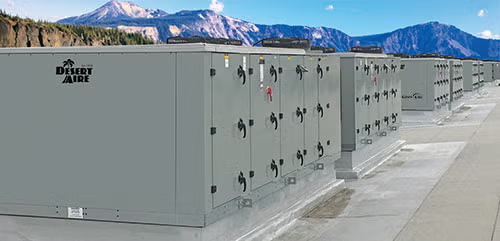
A successful grow operation must carefully consider the concepts discussed in this application note. Understanding that small changes in temperature or humidity (VPD) can have a dramatic impact on HVACD operating costs is essential to optimize yields, minimize costs, and maximize profitability. A suggested discussion topic between growers and their mechanical engineers would include: What design conditions minimize HVACD size and energy consumption but keeps plants in an optimized growth factor area?
SUMMARY
• LED lighted rooms should operate at warmer zone temperatures than HID lit rooms.
• Photosynthesis is more efficient at warmer temperatures.
• CO2 assimilation rates are optimized at warmer temperatures.
• Vapor Pressure Deficit (VPD) not relative humidity is an important variable in growth.
• Air movement through the canopy is extremely important.
• Capital costs and utility costs are significantly impacted by the choice of design conditions.
DEFINITIONS
Vapor Pressure Deficit (VPD): the difference between the elevated leaf temperature and how much moisture the air can hold when it is saturated.
Transpiration: the process of evaporation of the water released through stomata cools the plant.
Evapotranspiration: the process by which water is transferred from plants to the atmosphere by evaporation from the plant’s surfaces (usually leaves) and by transpiration from plants. It is the amount of “sweat” the plant produces that is evaporated into the air. This moisture is the real moisture load in an indoor grow room operation as it relates to the HVAC and dehumidification system.
Photosynthesis: the process by which green plants use sunlight to synthesize nutrients from carbon dioxide and water.
Respiration: the process of converting sugar and oxygen into carbon dioxide.
REFERENCES
www.blackdogled.com. Leaf Surface Temperature with HPS, MH, CFL and LED Grow Lights: Effects of Different Artificial Grow Lighting Technologies on Leaf Surface Temperature. Black Dog LED, www.blackdogled.com/pages/lst
Lohraseb, I, Collins, NC., Parent, B., (2017, January)
www.ncbi.nlm.nih.gov. Diverging temperature responses of CO2 assimilation and plant development explain the overall effect of temperature on biomass accumulation in wheat leaves and grains.
overgrow.com (2021, January). Why we should be running higher temps for LED lights. https://overgrow.com/t/why-we-should-be-running-higher-temps-for-led-lights/43697
Frender, K, (2017, June, 2021, April) www.maximumyield.com The Relationship Between Leaf Surface Temperature and Lighting Spectrum. www.maximumyield.com/the-relationship-between-leaf-surface-temperature-and-lighting-spectrum/2/3226
Brown, K, (2016, March) www.cannabisbusinesstimes.com
The LED Transition: Know what to expect, and pitfalls to avoid, when you test your grow with new LED technology.
www.cannabisbusinesstimes.com/article/cbt-032316-led-transition-lighting-testing/
Moody, E, (2019, September) plight.com How LED and HPS Lighting can affect air and leaf temperature: The effects of Convective Heat vs. Radiant Heat. https://pllight.com/how-led-and-hps-lighting-can-affect-air-and-leaf-temperature/
www.thriveagritech.com (2019, October) Avoid this common mistake when comparing LEDs to HPS. Thrive Agritech, www.thriveagritech.com/avoid-this-common-mistake-when-comparing-leds-to-hps/
Related Products

GrowAire™ Series
Desert Aire’s GrowAire™ Dehumidification Systems are specifically designed for indoor farming and ...
View Details
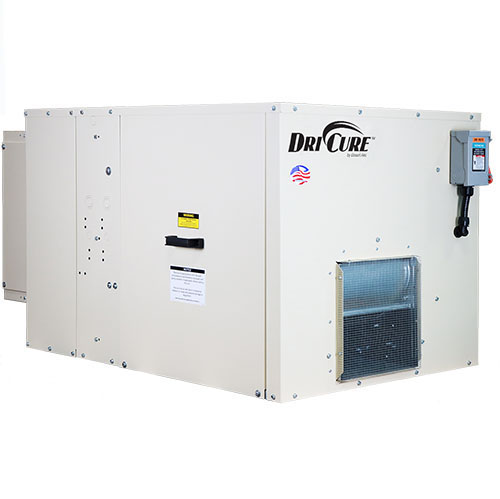
DriCure™ Series Dehumidifier
Desert Aire’s DriCure™ Dehumidification Systems are specifically designed as an all-in-one solutio...
View Details
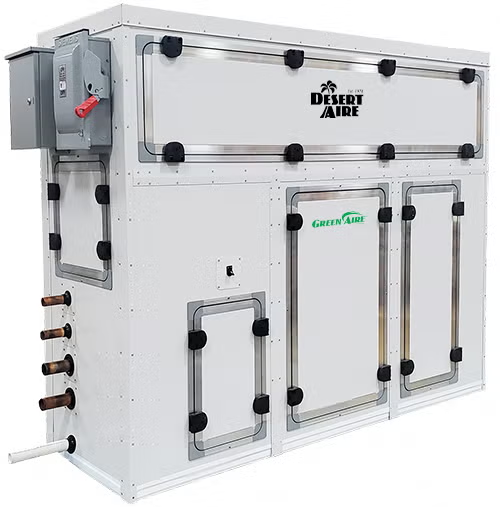
GreenAire™ Series
Desert Aire’s GreenAire™ Dehumidification System offers you complete indoor climate control and su...
View Details
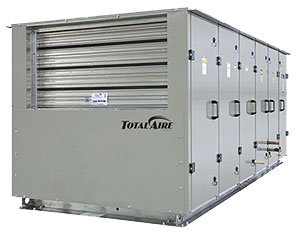
TotalAire™ Series
TotalAire™ Series DOAS systems offer our widest range of performance options including energy recove...
View Details
Find a Desert Aire Sales Rep Near You!
Our network of independent representatives are fully trained on Desert Aire’s dehumidification and DOAS solutions and can assist you in designing and sizing your engineered solutions.
